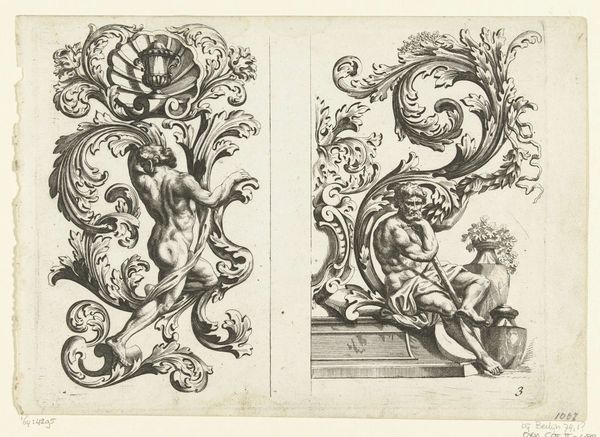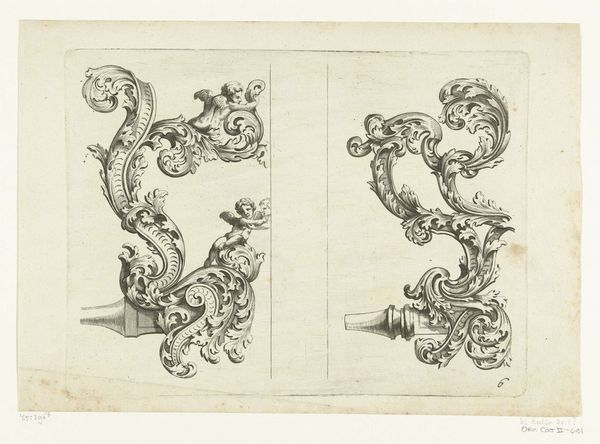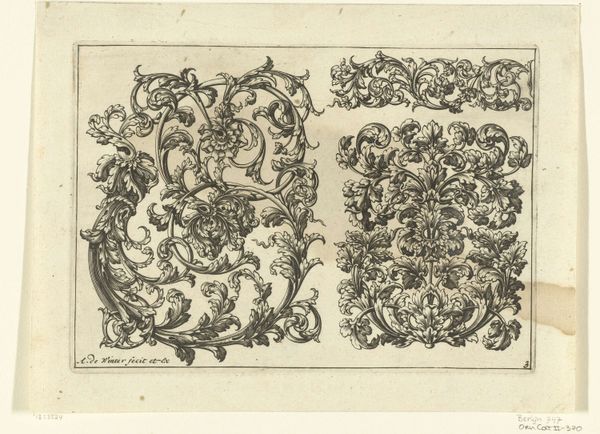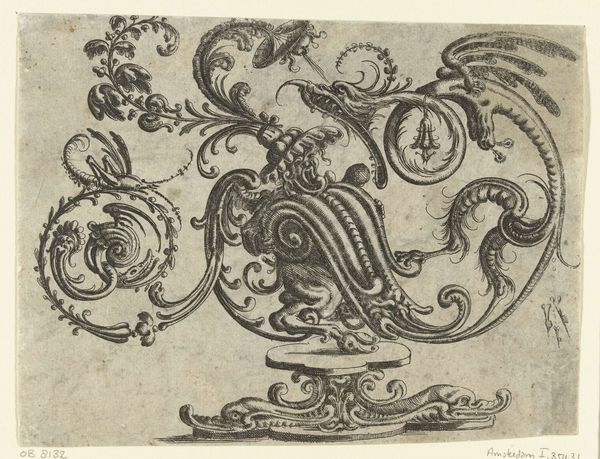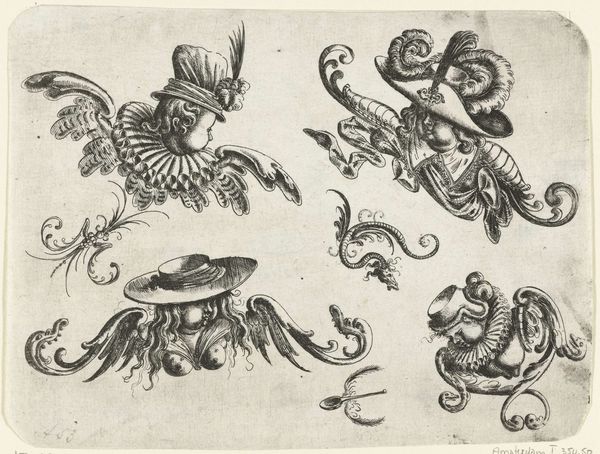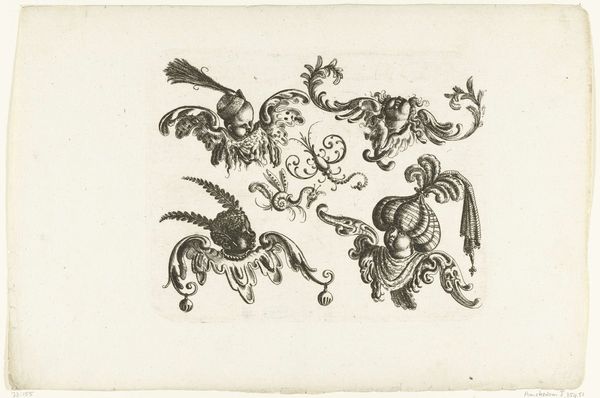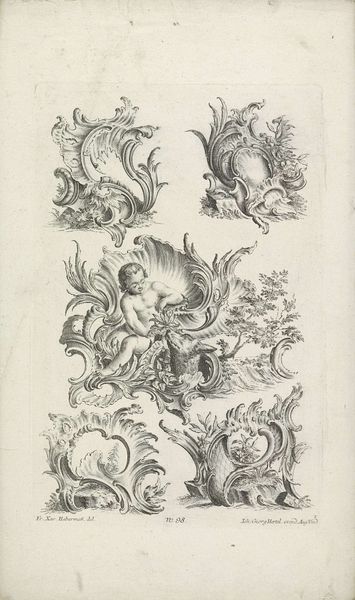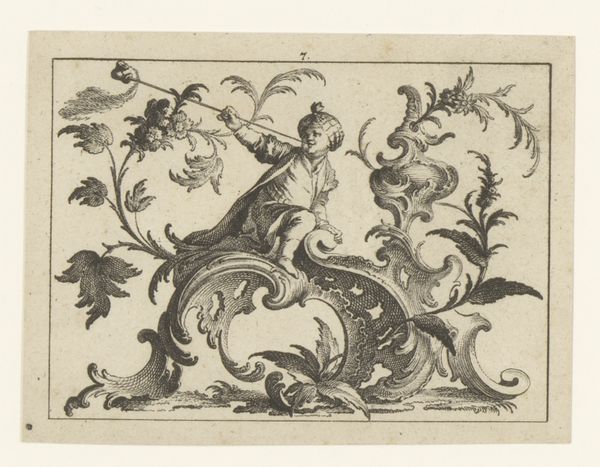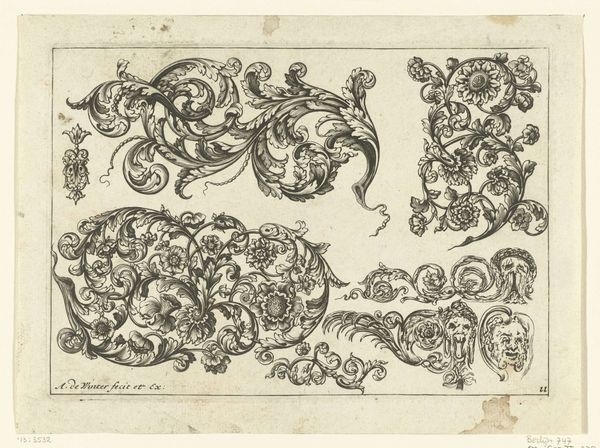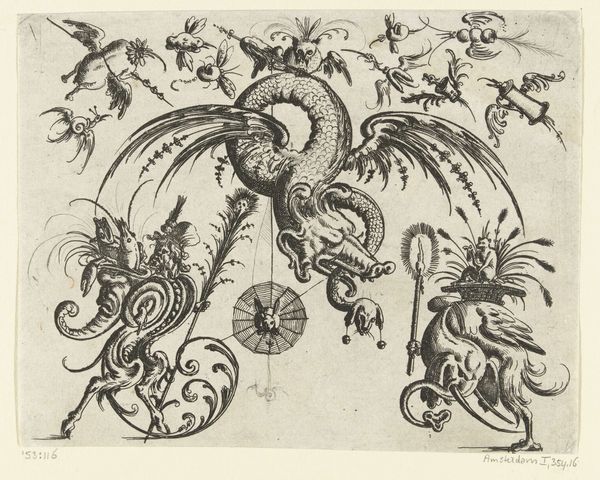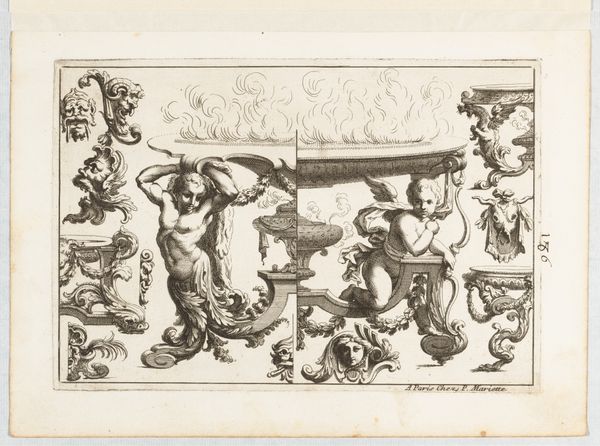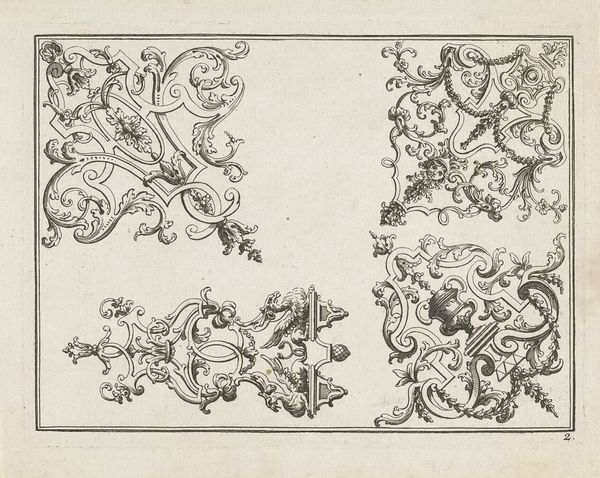
drawing, ink, engraving
#
drawing
#
baroque
#
pen drawing
#
pen illustration
#
pen sketch
#
old engraving style
#
form
#
personal sketchbook
#
ink
#
ink drawing experimentation
#
geometric
#
pen-ink sketch
#
pen work
#
sketchbook drawing
#
history-painting
#
decorative-art
#
sketchbook art
#
engraving
Dimensions: height 181 mm, width 240 mm
Copyright: Rijks Museum: Open Domain
Curator: Today we are looking at "Vier tafelpoten," or "Four Table Legs," an ink drawing by Susanne Maria von Sandrart, created sometime between 1668 and 1708. The work currently resides in the collection of the Rijksmuseum. Editor: Immediately striking is the delicate ornamentation. It's quite ornate—almost excessively so—yet balanced. It evokes a sense of baroque grandeur contained within these meticulously rendered lines. Curator: The meticulous line work certainly captures the decorative exuberance of the Baroque, doesn’t it? Consider how the forms are constructed—repeating, contrasting, and scaling elements establish an intriguing play between positive and negative space. Editor: Yes, the balance achieved through repetition and variation is fascinating, especially when viewed through a lens of status and power. Table legs, typically utilitarian, are here elevated to almost theatrical expressions. I’m reminded of the Sun King, Louis XIV and the aristocratic excesses of the era— Versailles springs to mind, a space in which furniture itself was a symbol of authority and luxury. Curator: An interesting reading indeed. Now, consider the line itself: hatched and cross-hatched, creating volume and shadow. The individual lines aren't merely descriptive; they’re actively shaping and defining form. Each swirling leaf and cherubic figure, born from careful hatching. Editor: Precisely. And while we are speaking of cherubic figures, isn't it worth thinking about the narratives imposed upon certain bodies – how are we reading the cherubic figures, with all of its religious and societal symbolism as expressions of power, wealth and indeed, often control of vulnerable populations through those very signifiers? These idealized representations always have implications beyond simple aesthetics. Curator: I appreciate your emphasis on considering beyond formal elements alone. It prompts deeper questions regarding both aesthetic choices, the politics of their time, and our perception of them today. Editor: Indeed. Ultimately, viewing art in its complex contexts creates far more meaningful dialogue. Curator: Well said. Susanne Maria von Sandrart's ink drawing provides us a detailed look into the world of design, allowing us to discuss both the artwork's structural foundations, and its ability to project political ideologies from centuries past.
Comments
No comments
Be the first to comment and join the conversation on the ultimate creative platform.

